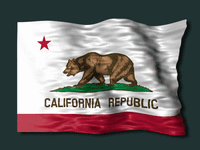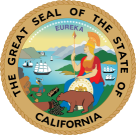|
Welcome to San Joaquin
County Genealogy Research

Stockton 1866
My name is Bob
Jenkins and I created this
website to provide genealogy
information and links to
genealogy information to
assist people in researching
their San Joaquin County
California ancestors.
I would appreciate any
contribution that you would like to
make to this site:
biographies, obituaries,
birth, marriage, death info,
grave info, photographs....etc
|
Use the box below to
search for
San Joaquin County Data
|
Brief
History:
San Joaquin [san wah-keen] is
a county with a total land and water area of
1,426 square miles within the Central Valley
of
California, developed around the San
Joaquin River. It is considered to be one of
the best agricultural regions in the United
States. San Joaquin County's top crops
are almonds, grapes and walnuts. Farmers
also produce cherries, tomatoes, beans,
corn, potatoes, pears and plenty of
other fruits and vegetables, and dairy farms
are also common. In the past, the county was
known for its melons.
The first European-American to enter
the San Joaquin Valley, so far as known, was
Lt. Gabriel Moraga, who left Mission San
Jose in 1806 for the purpose of
exploring the interior lands for potential
mission locations. While Moraga never
arrived at
what later became San Joaquin County,
he did give the name San Joaquin (Spanish
for Saint Joachim) to the San Joaquin
River. The county takes its name from
the river around which it was developed.
Between 1843 and 1846, during the era
when California was a province of
independent Mexico, five Mexican land grants
were made in what became San Joaquin
County: Campo de los Franceses (Camp of the
Frenchmen), Pescadero (Grimes),
Pescadero (Pico), Sanjon de los
Moquelumnes and Thompson. They were
developed for ranching and agriculture. The
region
attracted more miners and settlers at
the time of the California Gold Rush.
Captain Charles M. Weber (1814-1881)
was a German-born businessman who arrived at
Mission San Jose in 1842. There, he
formed a short-lived partnership with
William Gulnac, a former New York resident.
Through Gulnac, Weber obtained one
half of a 48,747-acre grant of land
known in general terms as the Camp of the
Frenchmen 'French Camp' in 1844.
In
1845, Gulnac sold Weber his half of
the land grant land grant in what would
become San Joaquin County, on which he
raised
cattle, mined gold, and founded the
city of Weberville as a river port and
business center.
During its early years, Stockton was
known by several names, including
'Weberville,' 'Tuleburg
[too-lee-burg],' 'Fat City'
and "Mudville." Weber eventually
decided on "Stockton" in honor of Commodore
Robert F. Stockton. Weber built the first
permanent residence in San Joaquin
County at what is now known a Weber Point in
Stockton. Stockton has been the seat of
San Joaquin County since the city was
incorporated in 1850.
The first family to arrive in the area
that would become San Joaquin County was the
David Kelsey family. David Kelsey, his
wife, Susan (Cazort), and daughters,
Josephine, Frances and America, crossed the
plains in 1843 with the Applegate family,
who traveled on to Oregon. The Kelseys
built a tule house at French Camp. David
died there of smallpox in 1845. Susan was
stricken with the same disease and was
blinded by it, but she survived. Josephine
married Grove Crook, then Dr. Christopher
Grattan. Frances married Joseph
Buzzell and, while living at Tuleburg, gave
birth to a girl in 1848, the first child of
European
descent born in that town. America
married George Wyman.
San Joaquin was one of the original 27
counties when California became a state in
1850. Most of its territory has been part of
the county since 1850. Some of its
northern territory was part of Sacramento
County from 1850 to 1878, when it was added
to San Joaquin County. Some territory
in the south, which at one time was part of
San Joaquin County, was given to
Stanislaus County.
|
©
JenkinsGenealogyResearch
All Rights
Reserved.
This page last updated:
|



